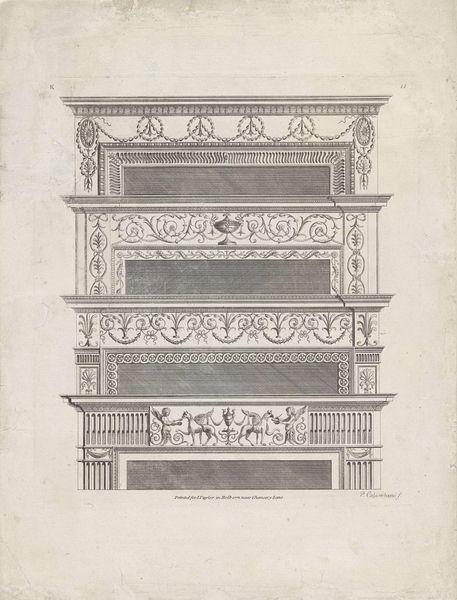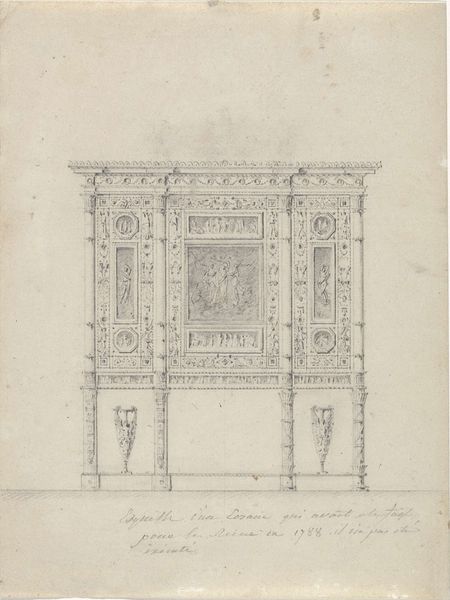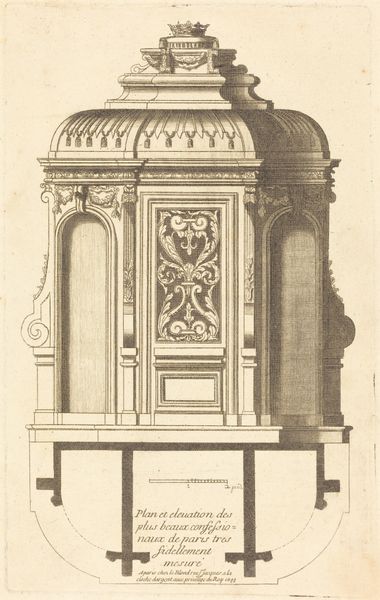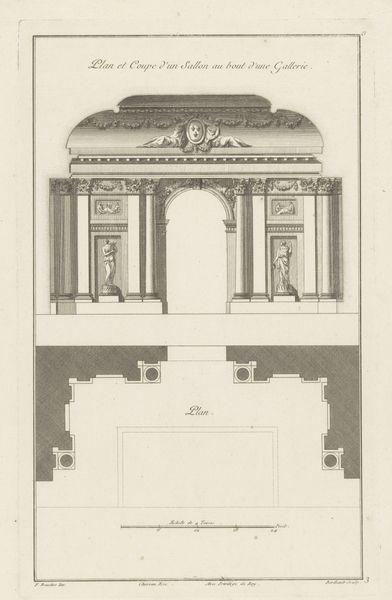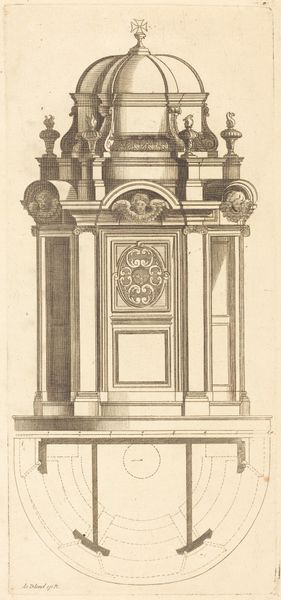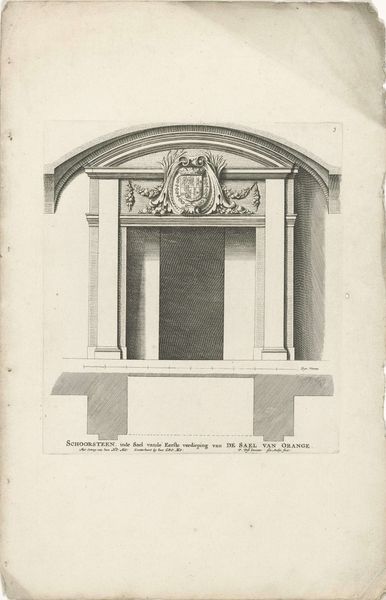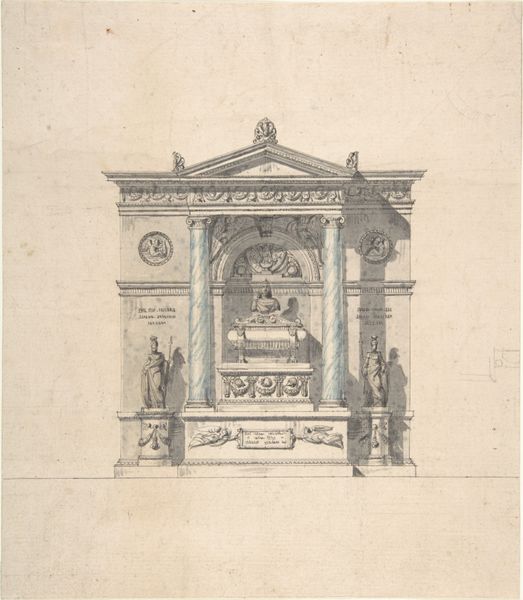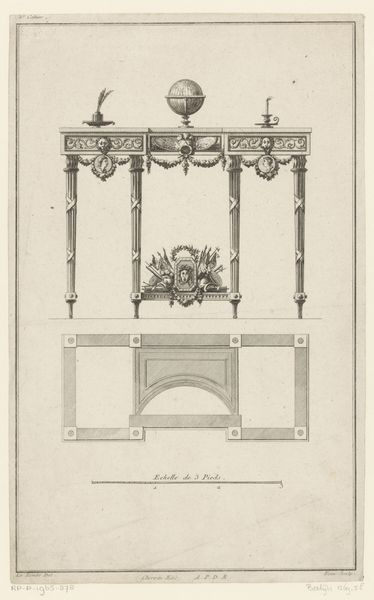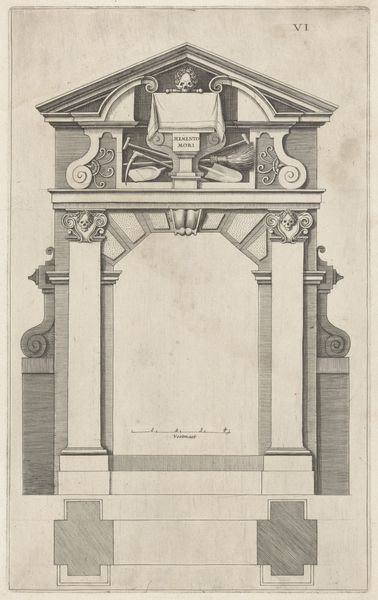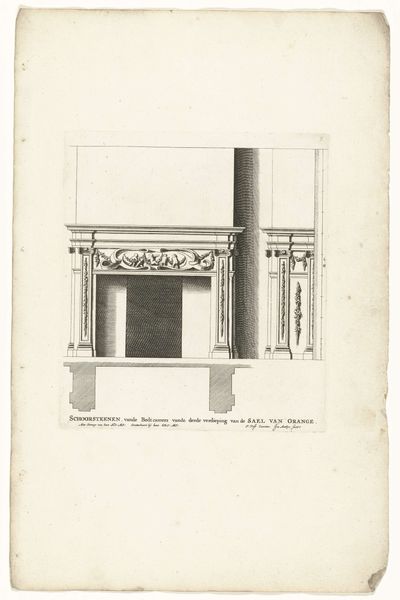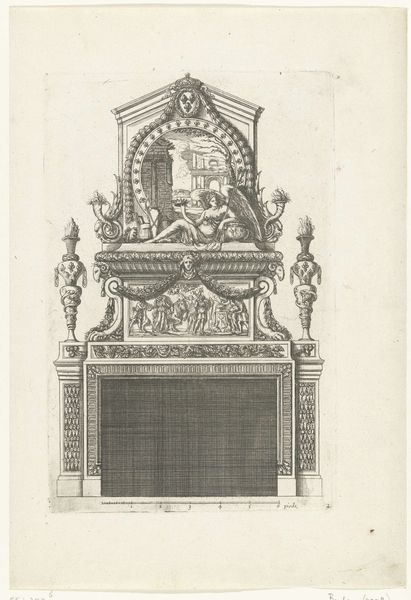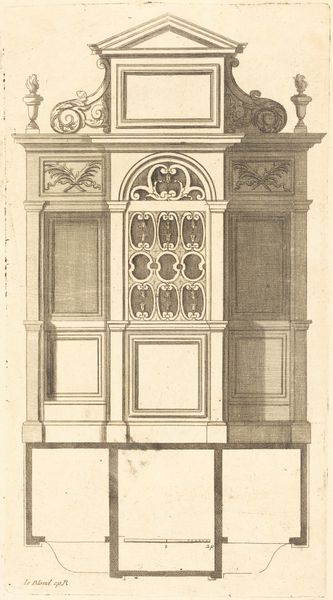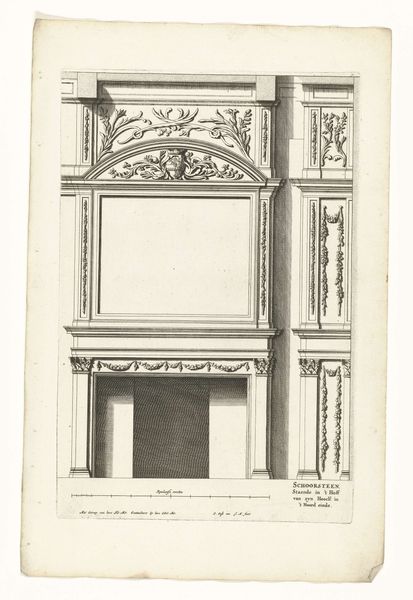
drawing, print, engraving, architecture
#
drawing
#
neoclacissism
#
aged paper
#
toned paper
# print
#
old engraving style
#
form
#
geometric
#
line
#
decorative-art
#
engraving
#
architecture
Dimensions: height 266 mm, width 243 mm
Copyright: Rijks Museum: Open Domain
Curator: Here we have “Vier Schoorsteenmantels,” or "Four Chimneypieces," an engraving by Placido Columbani, dating to 1776. Editor: My immediate thought is that it feels incredibly austere. Each section seems meticulously planned, with little room for deviation. Curator: Indeed. Look at the precision of the lines, the geometric organization, the emphasis on form. Columbani exemplifies Neoclassicism. Every detail is deliberately placed. We could almost decode the structuralist principles in its composition alone. Editor: And within that rigidity, there’s a certain power. Consider how the fireplace became a focal point during this era. Beyond mere functionality, these designs broadcast status, class, and the strict social structures in place at the time. Curator: Observe the recurring motifs. Leaf patterns, urns, rectangular forms—each contributing to an overall sense of order and harmony. These were potent symbols of renewal and civilization at the height of the Enlightenment. Editor: Yes, but at what cost? This aesthetic embraced ideals of rationalism even as revolutionary fervor was brewing throughout the western world. The clean lines can be interpreted as symbolic repression, and the suppression of revolutionary sentiment with decoration that reflected imperial goals of conquest. Curator: Still, consider the technique. Columbani masterfully translates architectural ideas into two dimensions. The line work provides the viewer with an extremely complete vision, capturing form through light and shadow using nothing more than hatching and the density of the ink itself. Editor: Even these elements play a political role. Line engravings reproduced easily and cheaply, facilitating dissemination of this upper-class design throughout different sections of society and projecting ideals about power throughout various different groups. It becomes a method of exerting influence. Curator: So we are agreed—form itself becomes a social and even political language. Editor: Exactly. Examining "Four Chimneypieces" is less about isolated aesthetics and more about unraveling power dynamics. Curator: Precisely. The tension between form and meaning, visible and invisible, are essential to the artist’s intention here. Editor: Which challenges us to rethink what domestic architecture can communicate, what we might choose to amplify, or leave behind.
Comments
No comments
Be the first to comment and join the conversation on the ultimate creative platform.
